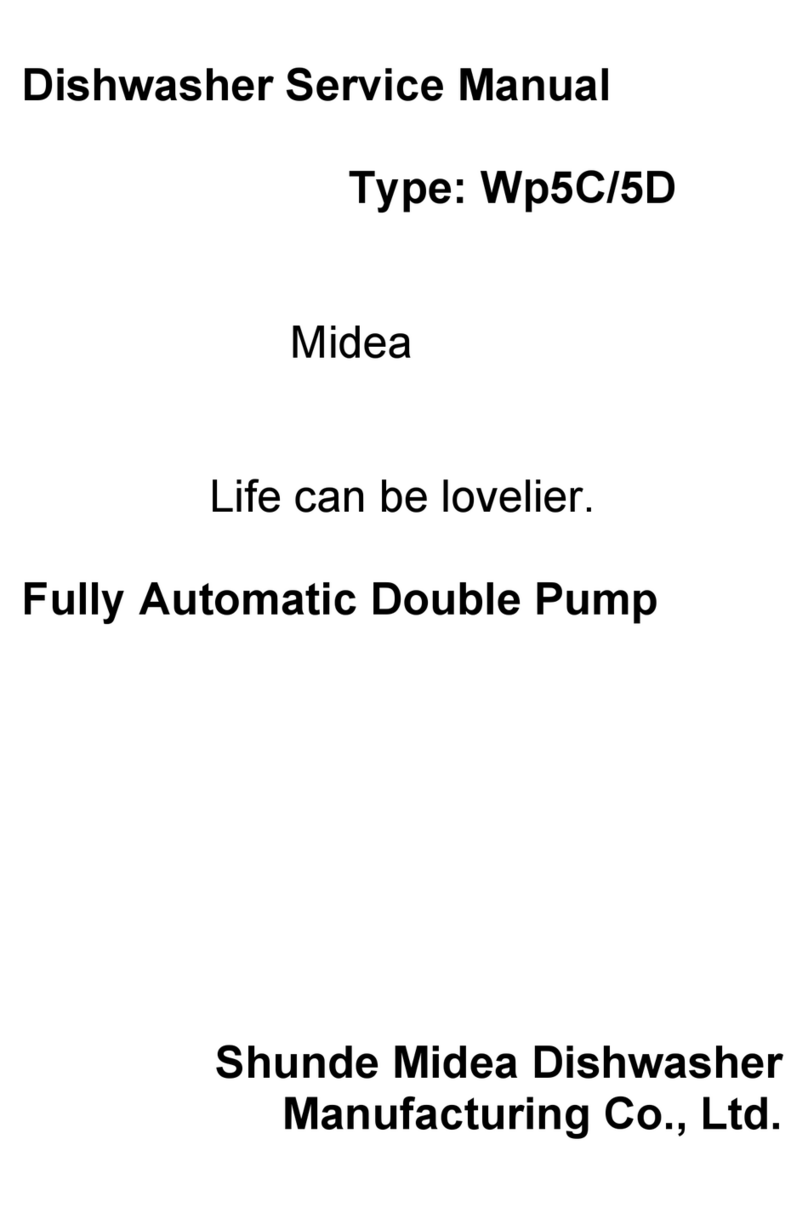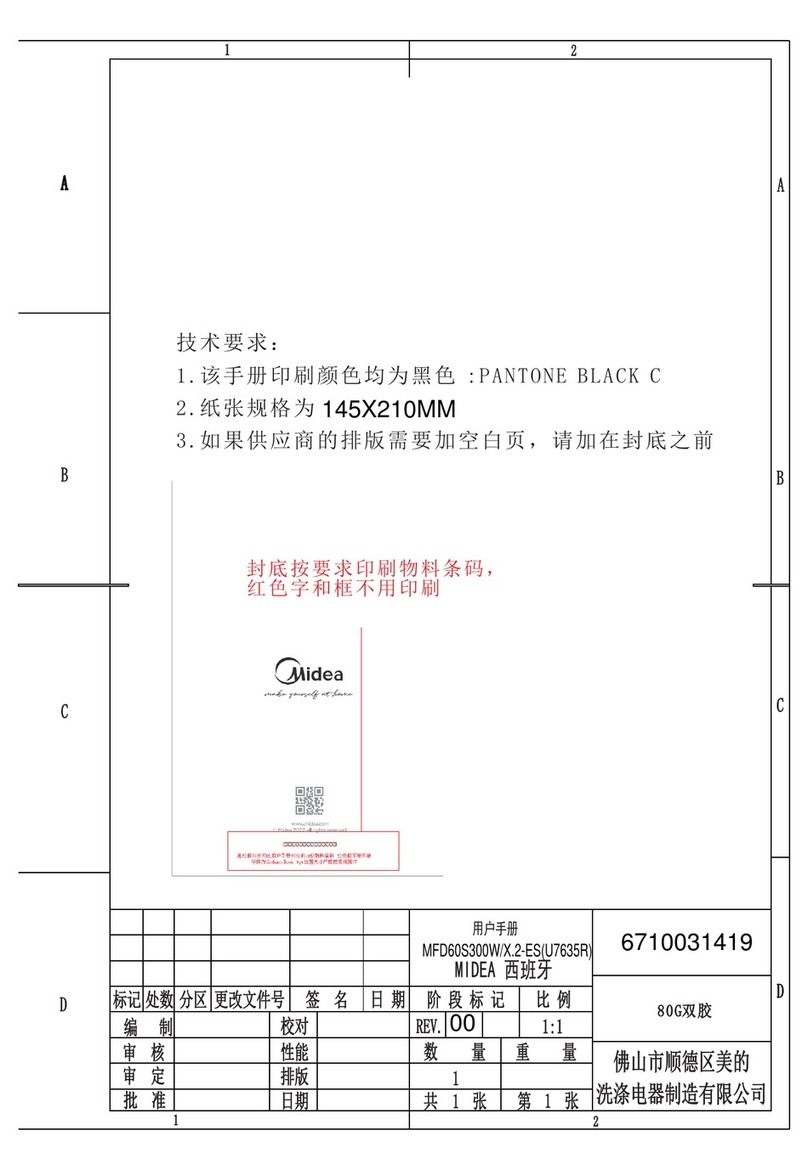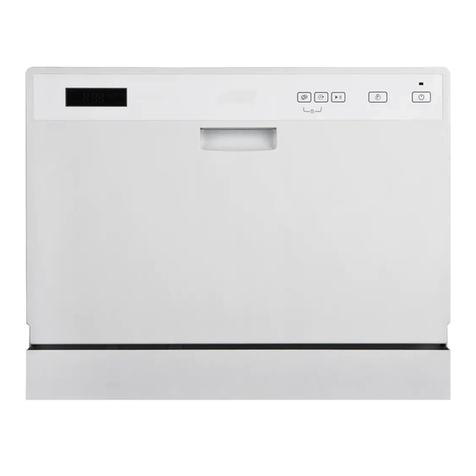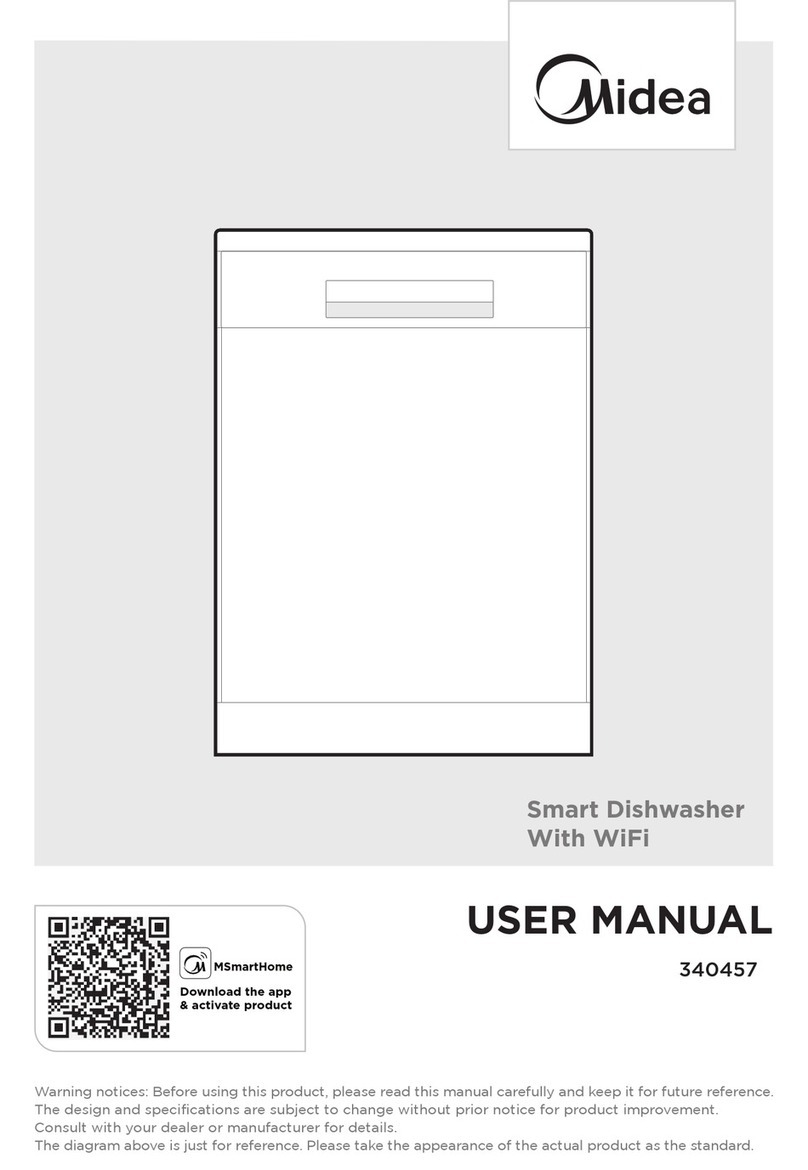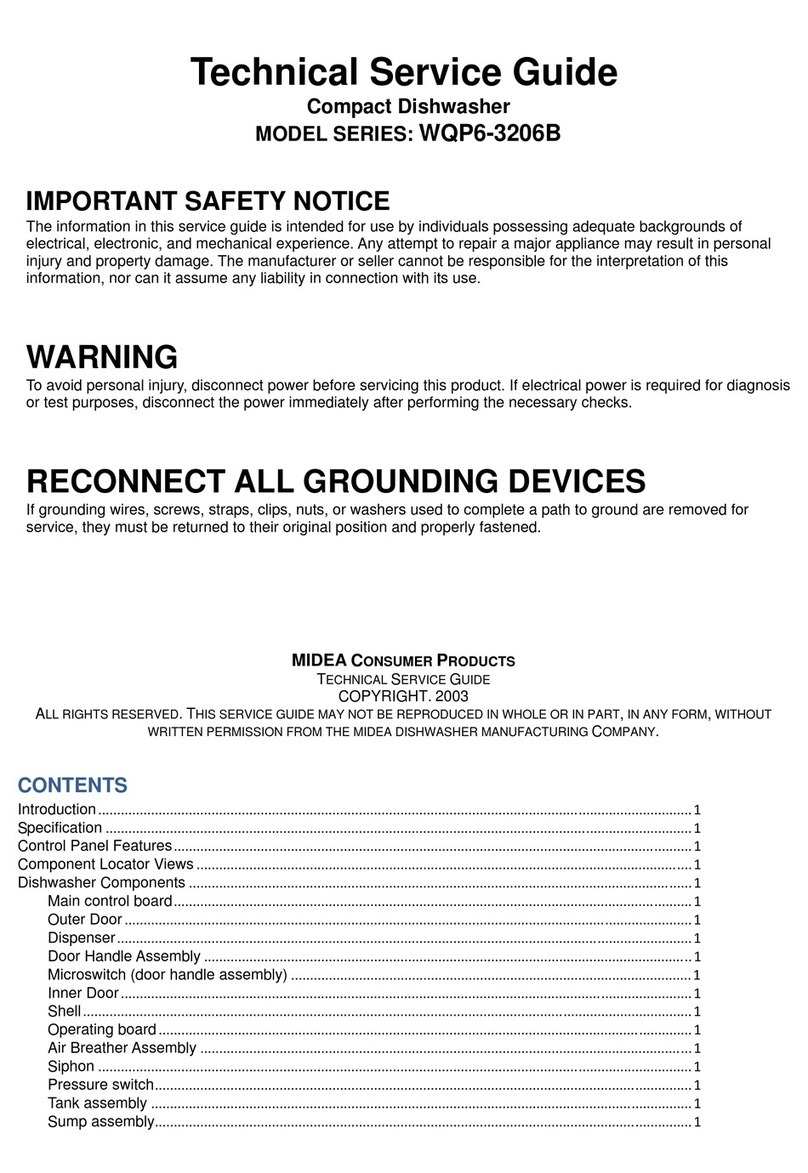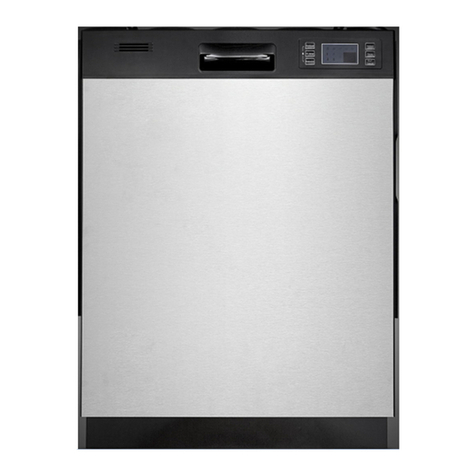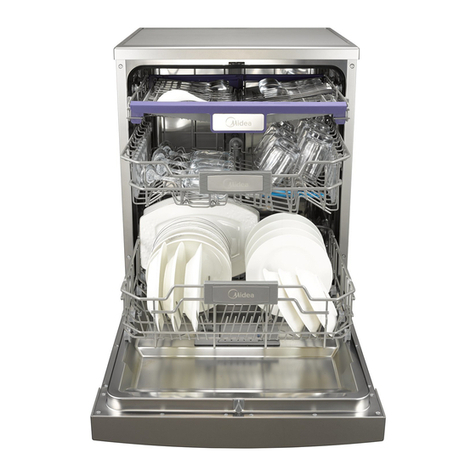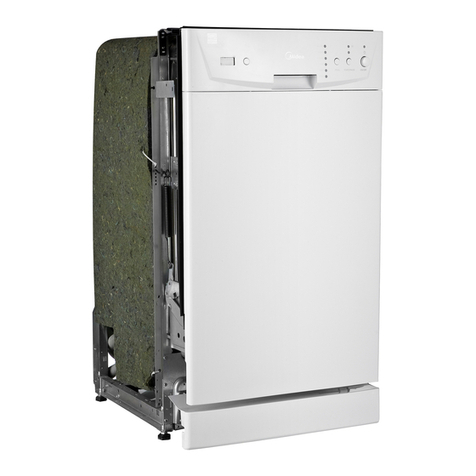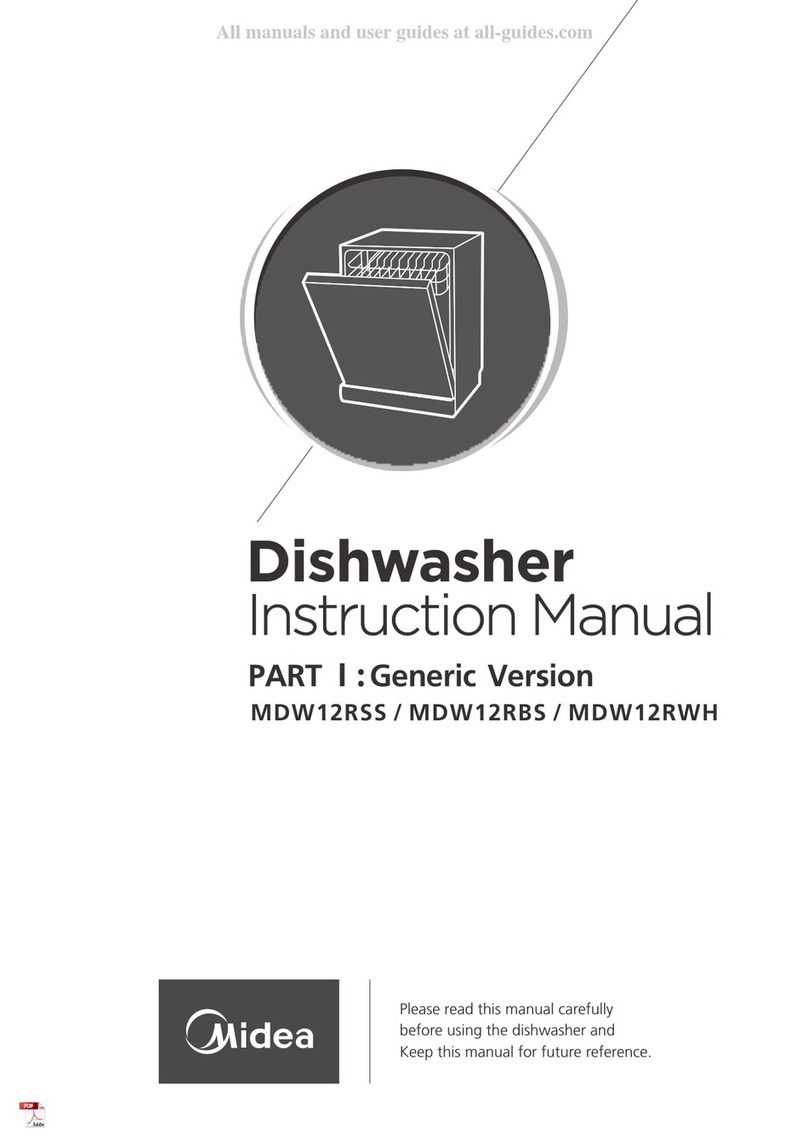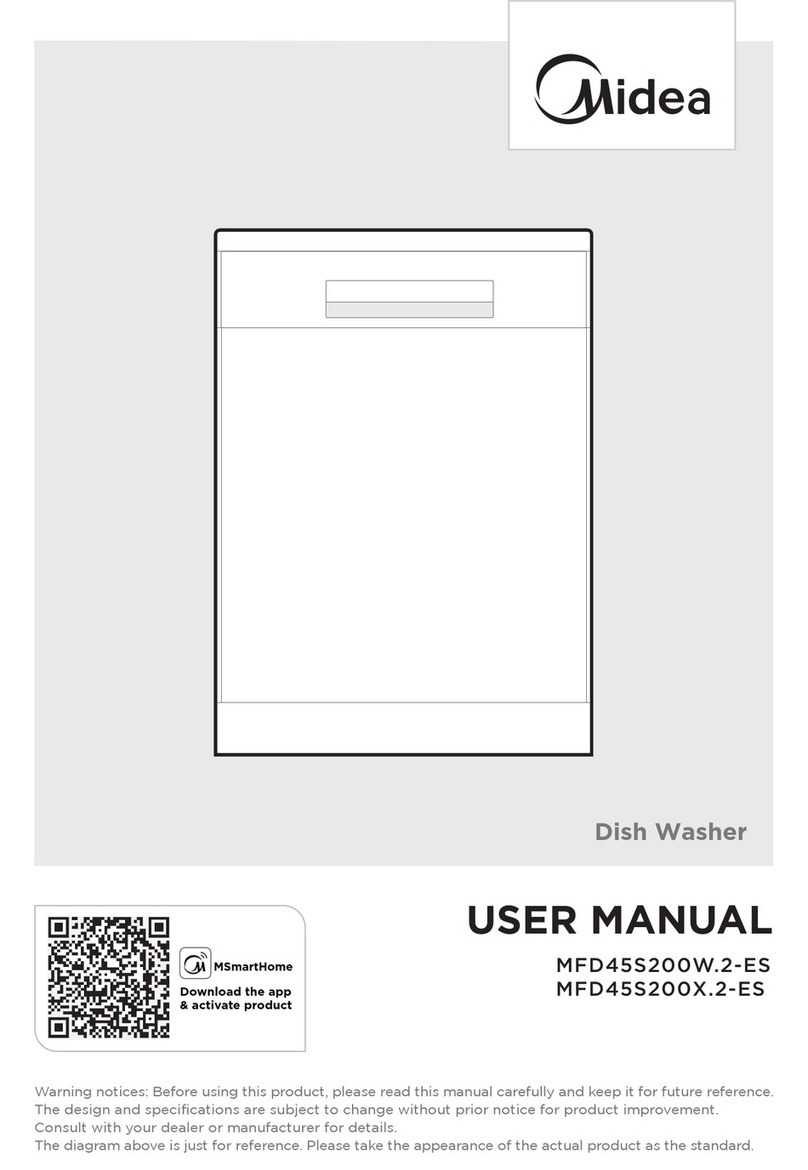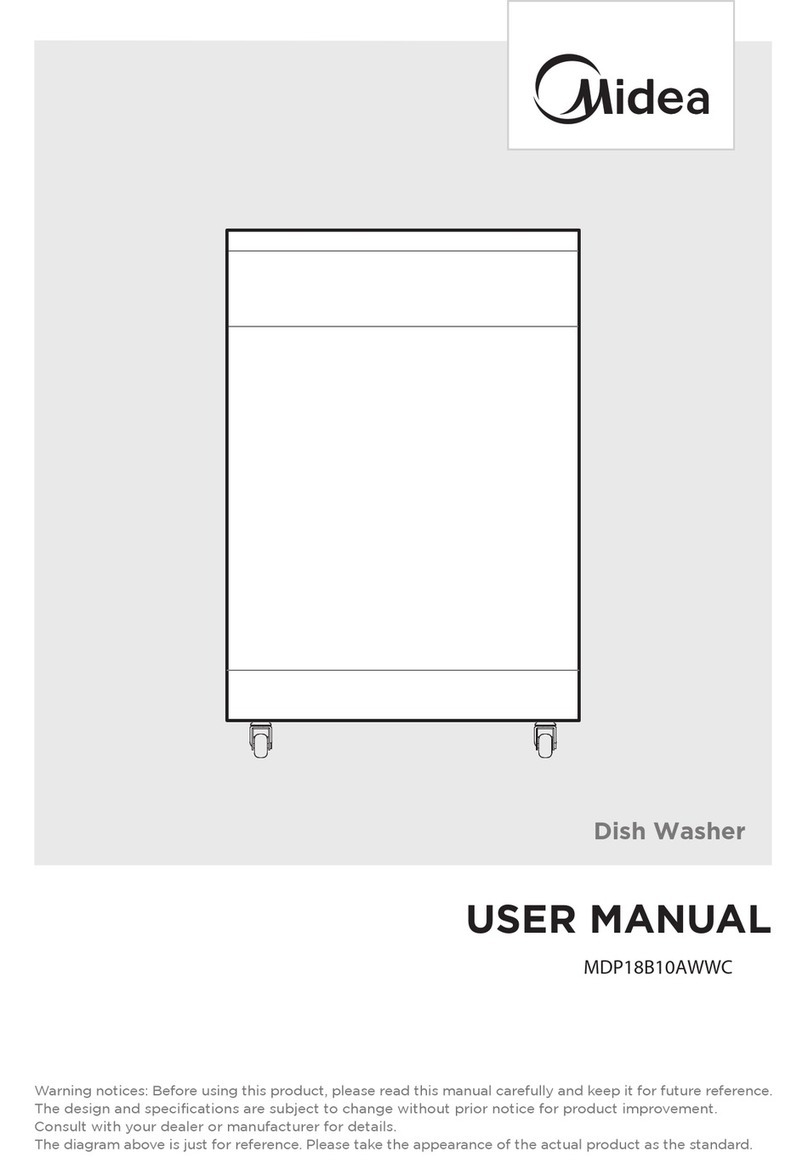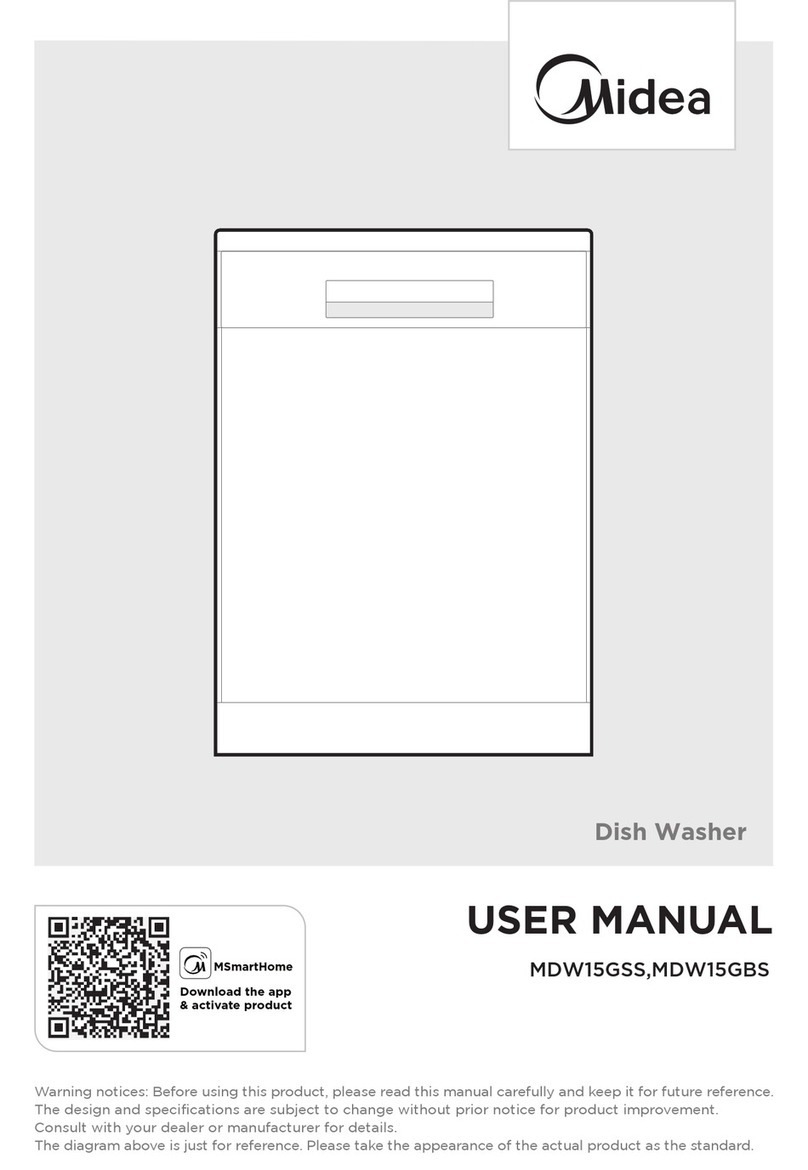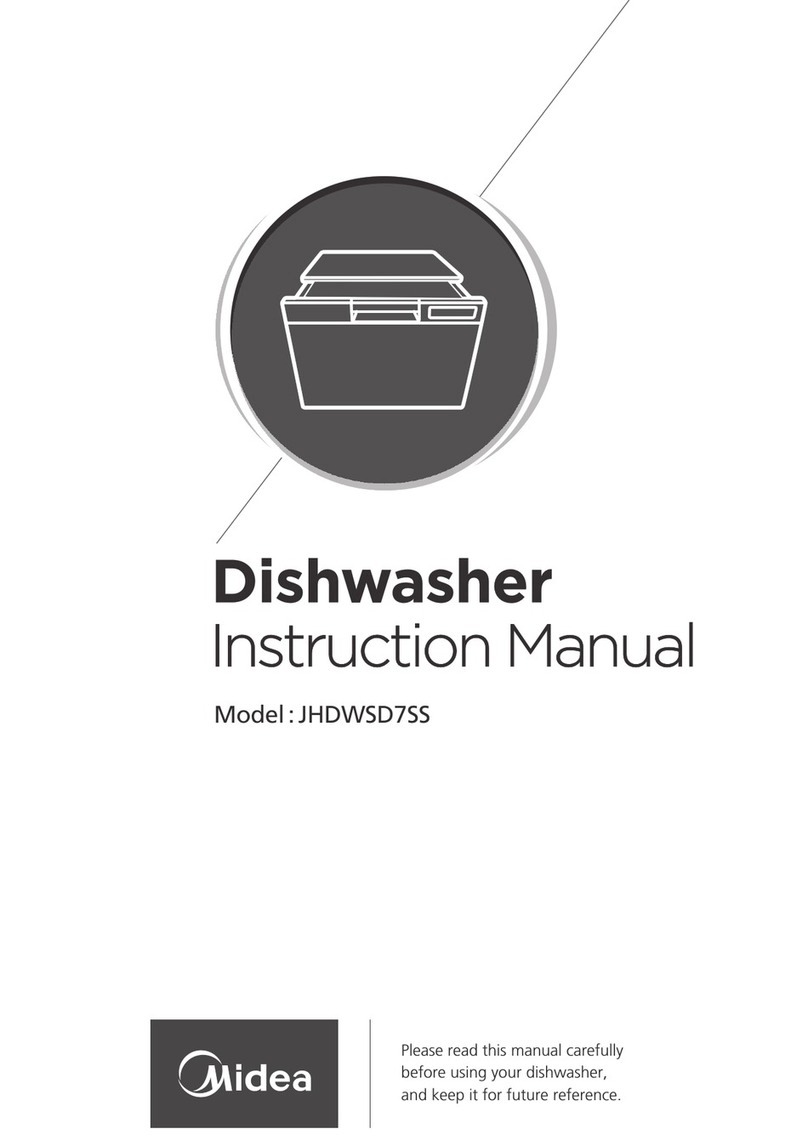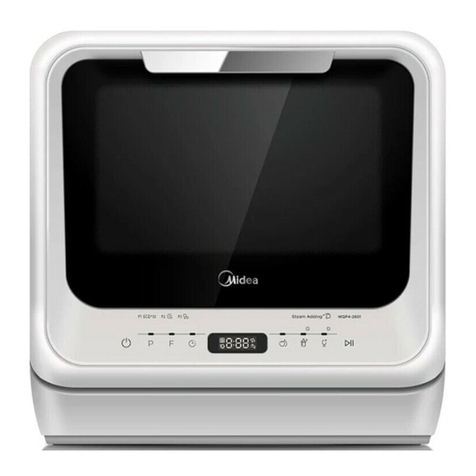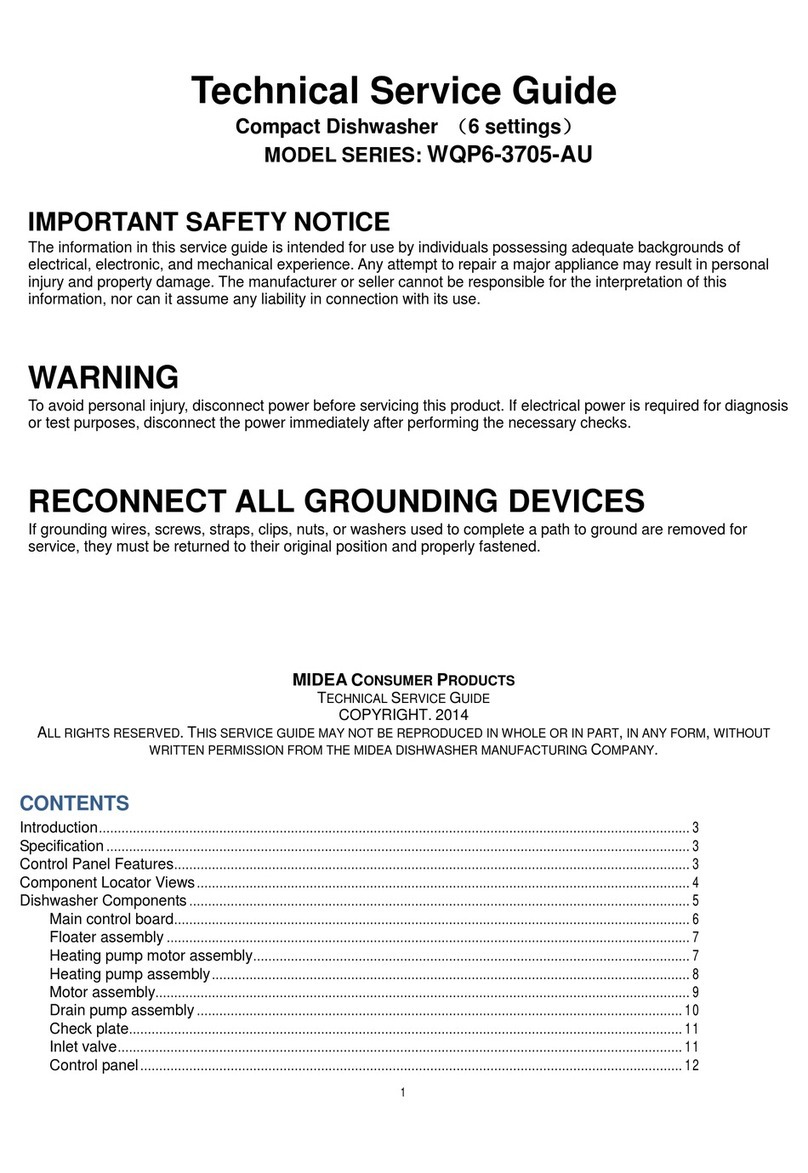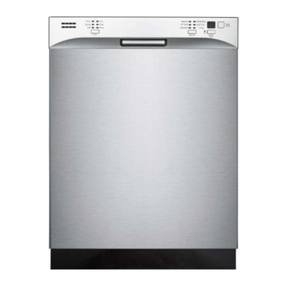
55
Adjusting Rinse Aid Dispenser
The rinse aid dispenser has six or four settings. Always start with the dispenser
set on "4". If spots and poor drying are a problem, increase the amount of rinse
aid dispensed by removing the dispenser lid and rotating the dial to "5". If the
dishes still are not drying properly or are show spots, adjust the dial to the next
higher lever until your dishes are spot-free. The recommended setting is "4".
(Factory value is "4".)
Increase the dose if there are drops of water or lime spots on the dishes after washing.
Reduce it if there are sticky whitish stains on your dishes or a bluish film on glassware or
knife blades.
Adjust lever
(Rinse)
Adjust lever
(Rinse)
during the next wash. Don't forget to replace the cap before you close dishwasher door.
Clean up any rinse aid spilled while during filling with an absorbent cloth to avoid excessive foaming
NOTE:NOTE:
NOTE:NOTE:
Detergents have chemical ingredients that are necessary to remove dirt, crush dirt and transport it out of the dishwasher.
Most of the commercial quality detergents are suitable for this purpose.
B. DetergentB. Detergent
Detergents
There are 3sorts of detergents
1.With phosphate and with chlorine
2.With phosphate andwithout chlorine
3.Without phosphate and without chlorine
MAXMAX
Based on theirchemical composition, detergents can be split in two basic types:
The use of normal washing programs incombination with concentrated detergents
reduces pollution and is good for your dishes; these wash programs are specifically matched
to the dirt-dissolving properties of the enzymes of the concentrated detergent. For this reason
normal wash programs in which concentrated detergents are used can achieve the same
results that can otherwise onlybe achieved using intensive programs.
Detergent tablets ofdifferent brands dissolve at different speeds. For this reason some
detergent tablets cannotdissolve and develop their full cleaning power during short
programs. Therefore please use long programs when usingdetergent tablets, to
ensure the completeremoval of detergent residuals.
The dispenser mustbe refilled before the start ofeach wash cycle following the instructions
provided in the wash cycle table . Your dishwasher uses less detergent and rinse aid than
Conventional dishwasher. Generally, only one tablespoon of detergent is needed for
a normal wash load. More heavily soiled items need more detergent. Always add the
detergent just before starting the dishwasher, otherwise it could get damp and will not
dissolve properly.
Concentrated Detergent
Detergent Tablets
Detergent Dispenser
Conventional, alkaline detergents with caustic components
Low alkaline concentrated detergents with natural enzymes
Normally new pulveriseddetergent is without phosphate. Thus the water softener function of
phosphate is notgiven. If detergents without phosphate are used in the case of hardwater
often white spotsappear on dishes and glasses. Inthis case please add more detergent to reach
better results. Detergentswithout chlorine do only bleach a little. Strong and coloured spots will not
be removed completely. In this case please choose a programwith a higher temperature.
